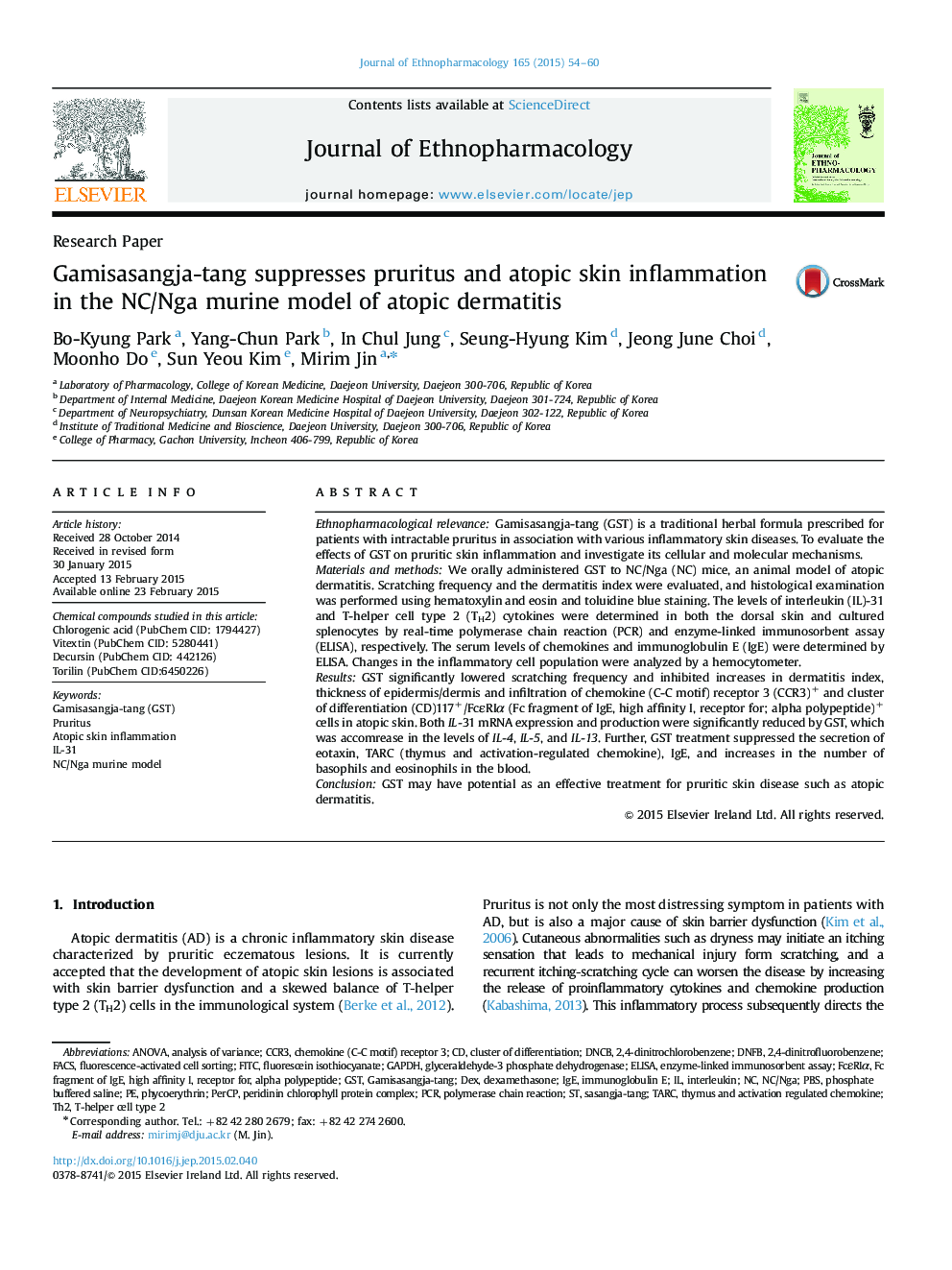| Article ID | Journal | Published Year | Pages | File Type |
|---|---|---|---|---|
| 2545056 | Journal of Ethnopharmacology | 2015 | 7 Pages |
Ethnopharmacological relevanceGamisasangja-tang (GST) is a traditional herbal formula prescribed for patients with intractable pruritus in association with various inflammatory skin diseases. To evaluate the effects of GST on pruritic skin inflammation and investigate its cellular and molecular mechanisms.Materials and methodsWe orally administered GST to NC/Nga (NC) mice, an animal model of atopic dermatitis. Scratching frequency and the dermatitis index were evaluated, and histological examination was performed using hematoxylin and eosin and toluidine blue staining. The levels of interleukin (IL)-31 and T-helper cell type 2 (TH2) cytokines were determined in both the dorsal skin and cultured splenocytes by real-time polymerase chain reaction (PCR) and enzyme-linked immunosorbent assay (ELISA), respectively. The serum levels of chemokines and immunoglobulin E (IgE) were determined by ELISA. Changes in the inflammatory cell population were analyzed by a hemocytometer.ResultsGST significantly lowered scratching frequency and inhibited increases in dermatitis index, thickness of epidermis/dermis and infiltration of chemokine (C-C motif) receptor 3 (CCR3)+ and cluster of differentiation (CD)117+/FcεRIα (Fc fragment of IgE, high affinity I, receptor for; alpha polypeptide)+ cells in atopic skin. Both IL-31 mRNA expression and production were significantly reduced by GST, which was accomrease in the levels of IL-4, IL-5, and IL-13. Further, GST treatment suppressed the secretion of eotaxin, TARC (thymus and activation-regulated chemokine), IgE, and increases in the number of basophils and eosinophils in the blood.ConclusionGST may have potential as an effective treatment for pruritic skin disease such as atopic dermatitis.
Graphical abstractFigure optionsDownload full-size imageDownload high-quality image (218 K)Download as PowerPoint slide
